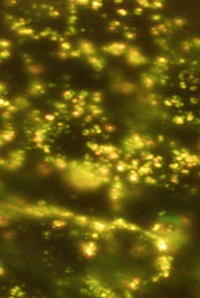Atomic hangers-on spotted
 Australian researchers have observed, for the first time, the formation of quasiparticles in real time.
Australian researchers have observed, for the first time, the formation of quasiparticles in real time.
The experiment on the cutting edge of physics could have real implications for the future of ultrafast electronics.
When an electron moves in a solid, it produces a polarisation due to its electrical charge.
This ‘polarisation cloud’ moves along with the electron, and together these can theoretically be described as an independent quasiparticle.
The study features a new theoretical model to investigate quasiparticle formation developed by Monash University physicists Dr Meera Parish and Dr Jesper Levinsen.
“It’s like a skier in powder snow,” said Professor Rudolf Grimm, who led the broader experimental investigation at the University of Innsbruck in Austria.
“The skier is enveloped by a cloud of snow crystals. Together they form a system with different properties than the skier without the snow cloud.”
However, measuring the formation of quasiparticles in solids represents a major challenge.
“These processes take place in the attosecond range and their time-resolved observation is extremely difficult,” said Professor Grimm, whose team instead uses ultracold quantum gases to investigate complex quantum systems.
“We simulate the same physical processes at a much lower density. The emergence of quasiparticles lasts a few microseconds.”
Ultracold quantum gases are an ideal testing ground to study physical phenomena that occur in solid-state materials and other states of matter, such as neutron stars. In such gases, quantum states of many particles can be engineered and the interaction between the particles precisely manipulated.
“The observation of quasiparticle formation, virtually in real time, has fascinating implications,” said Dr Parish.
“It can help us to better understand ultrafast quantum processes which can ultimately be harnessed in a new generation of electronic devices.”








 Print
Print